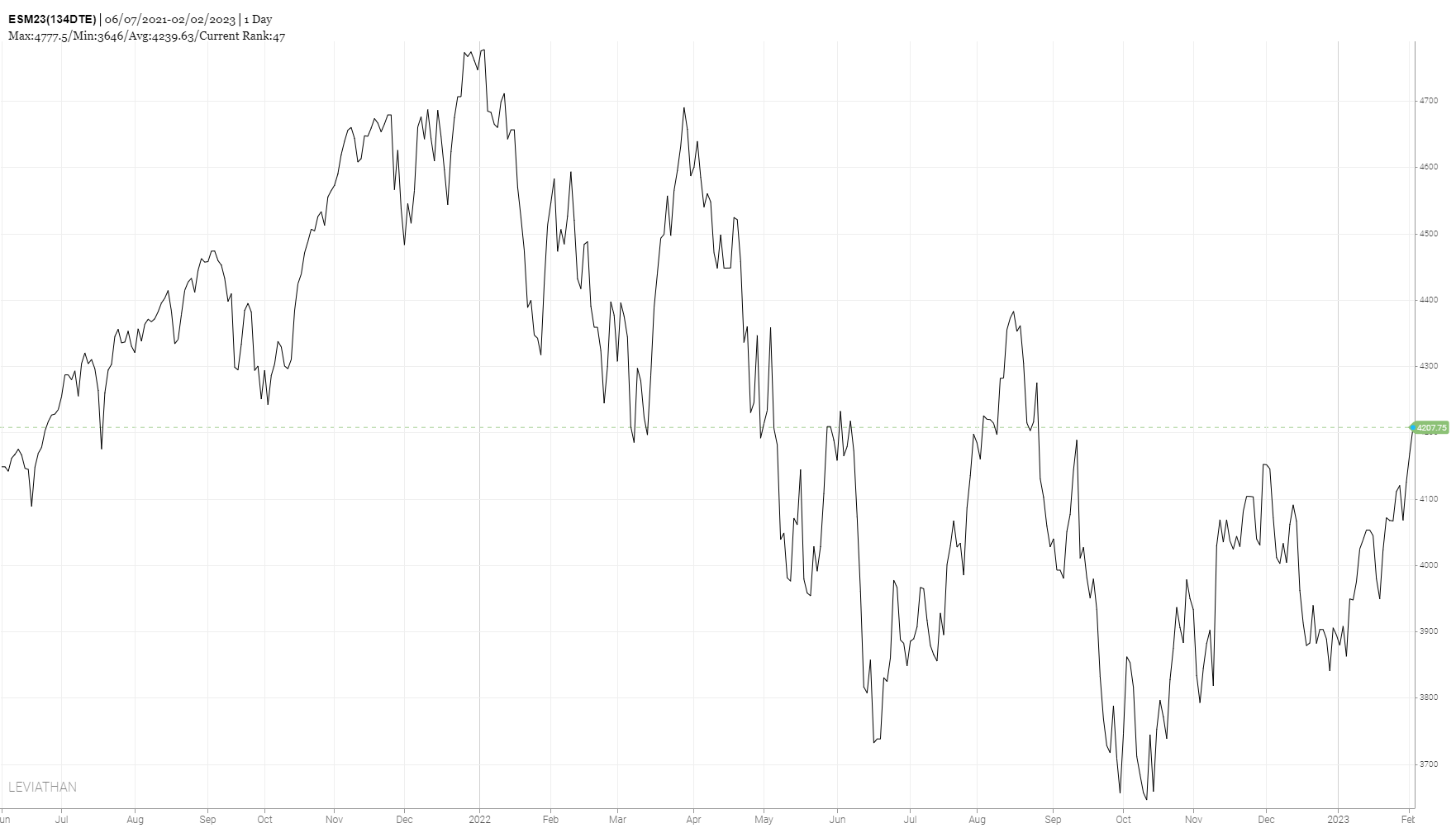Darren Krett
Thursday 9 February 2023
Share on:
Post views: 5648
Constant Maturity and Historical Pricing, what is the difference?
Categories
Lessons
Historical and constant maturity pricing are two distinct methods of pricing financial instruments. Historical pricing relies on past actual market data to calculate the value of a security or derivatives contract, while constant maturity pricing uses theoretical models to determine value.
The primary difference between the two methods is that historical prices reflect actual market conditions in a given period while constant maturity prices are based on expected future market trends. With historical pricing, what happened in the past has an impact on current prices. In contrast, with constant maturity prices, analysts attempt to predict how the markets will act over the long term and price accordingly.
For example, here is a chart of the 3960 put on the S&P 500 future on a constant maturity basis. The 3960 put is currently EXACTLY 100 points away from where we are trading and what the CM chart does , is linear fits, by looking at the volastility spline between the 2 closest strikes to give an implied volatility of the exact 100 point Out-The_money option whilst also linear fitted between months so you can look the performance of a 100 point out option, with the same days to expiration. Tis will allow you to analyuze value going back as far as the database would allow (in some cases as far back as the early 1990s). This will allow you to view the structures performance over various historical events too…..  Now here is the actual ESM3 contract, although detailed it can only go back as far as the life of the specific contract
Now here is the actual ESM3 contract, although detailed it can only go back as far as the life of the specific contract
 The advantage of using constant maturity pricing is that it allows investors to get an accurate measure of long-term value even when markets are volatile or information is scarce (such as with new securities). It also reduces uncertainty because it takes into account overall macroeconomic trends and other indicators that can help identify potential risks before they become reality.
The advantage of using constant maturity pricing is that it allows investors to get an accurate measure of long-term value even when markets are volatile or information is scarce (such as with new securities). It also reduces uncertainty because it takes into account overall macroeconomic trends and other indicators that can help identify potential risks before they become reality.
In conclusion, both historical and constant maturity pricing have their own strengths and weaknesses depending on what kind of analysis you’re looking for. For short-term trading decisions where current market conditions matter most, relying solely on historical data may be sufficient; however if you need more reliable long-term insights into potential returns then incorporating some form of constant maturity pricing can be beneficial as well.